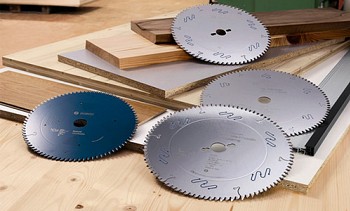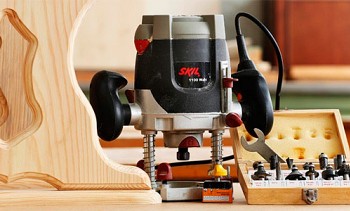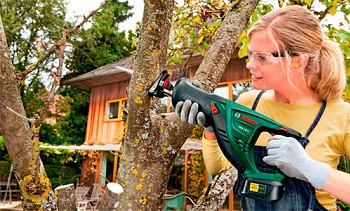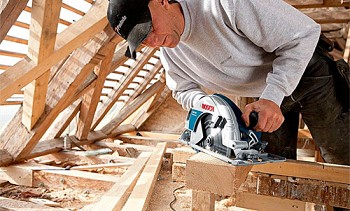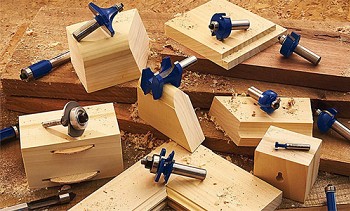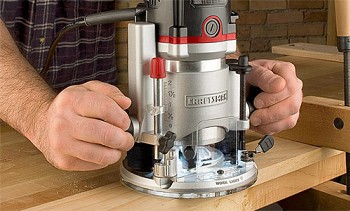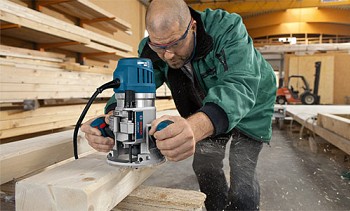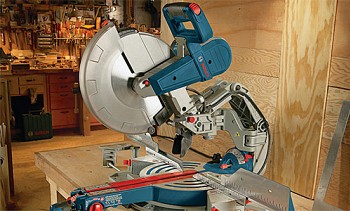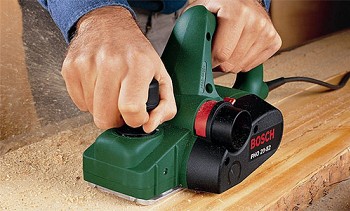A circular saw is a rather complex and traumatic tool; accordingly, many models are designed to perform certain types of work with a certain intensity. Just assuming, at a minimum, the scope of use of the tool, you can decide how to choose a circular saw - which characteristics to pay special attention to and which to neglect.
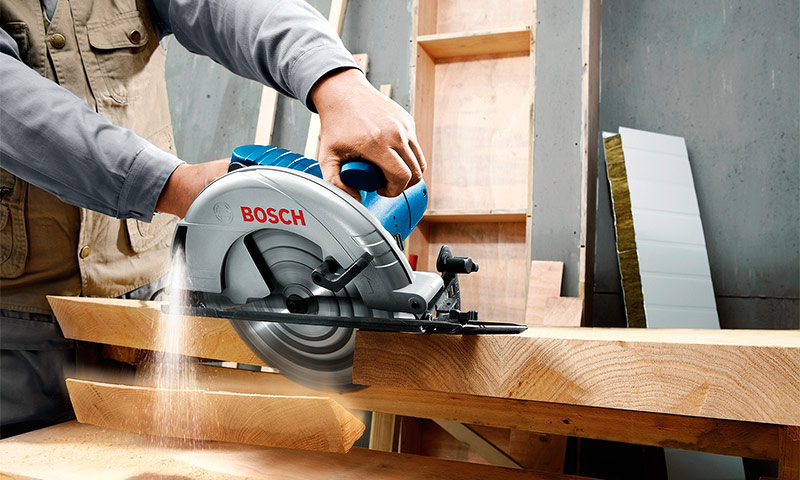
Content:
The device, the principle of operation and the use of a circular saw
At first glance, the device of the circular saw is as simple as possible - a powerful engine, on the shaft of which a detachable metal disk is worn. In the case of stationary tools, the engine can be located separately and transmit the force to the working shaft with a belt through a system of pulleys, but hand tools, which are the absolute majority among household ones, are made in one housing.
The complexity of the device is added by the need to use high-quality materials, strict observance of the alignment of parts, plus the adherence to serious security measures. The saw blade rotates at high speeds, so neglect of any of the items listed will lead to a breakdown of the tool at best.
As a result, an impressive number of mechanical-electronic protective and locking devices are added to the engine and the cutting wheel, the purpose of which is to instantly stop and disconnect the tool if something goes wrong.
The principle of operation of the circular saw is clear from its design - a rotating disk with teeth saws a board along which the tool itself is pulled. In the case of a stationary saw, everything happens the other way around - the board stretches through a circle fixed on the bed and is divided into two parts.
There is one important point to the use of the circular saw - it is not suitable for curly cutting and is intended to cut boards and other materials only in a straight line. There are models with an additional graduation of the leading sole, which allows you to set the disc not strictly perpendicular to the sawed surface, but at a certain angle, but at the same time, the saw is also carried out strictly in a straight line.

1. Upper main protective cover.
2. Power button.
3. Power lock button.
4. Laser switch on button.
5. Support handle.
6. The case with the engine.
7. Laser pointer.
8. Cutting angle adjustment.
9. Saw blade.
10. The bottom loaded casing.
11. Support sole
Varieties and selection of the required type of circulation saw
To choose the type of circular saw suitable for the planned work, you need to imagine their existing varieties.
Circular saws depending on the design
The mobility of the device and the size of the workpieces depend on the design:
1. Stationary. Such a saw is suitable for performing a large amount of monotonous work, for example, in production, where a large number of lumber is constantly processed. Such a tool is installed on a separate frame, has the appropriate dimensions and requires a separate place for installation, and in some cases even a room.

2. Tabletop. A smaller version of a stationary circular saw is also installed on a stationary base but much smaller. Suitable for large volumes of domestic work - for example, when building a house, bathhouse or similar structure.

3. Manual A mobile device that can process a part in several planes.It is used to work with different materials: wood, plastic, soft metals, etc. Of all the types, it has the smallest power and requires periodic rest, but it is mainly used for such types of work where it is not critical.

Circular saws according to intensity of use
Here it is necessary to take into account the scope of the proposed work and the planned speed of its implementation - depending on this, the appropriate type of circular saw is selected:
1. Professional. The materials and design solutions used in such devices allow them to be used without interruption throughout the entire working day. Usually these are universal tools that are suitable for processing materials of various stiffness and sizes.
2. Household. Modern household circular saws, like professional models, can boast of versatility in work, but without fail require compliance with the load conditions. Usually this is about 15 minutes of work for the same amount of rest time.
Circular saws by type of work performed and materials used
Using a conventional circular saw, various wooden elements can be cut into pieces. An ordinary circular saw is able to cut into pieces various wooden elements at different angles. However, there are special circular saws. Some of them are able to immerse themselves in wood, others are adapted for working with metal.
1. Circular saw for metal. A saw involving work with metals should be more powerful and adapted to work with different cutting discs - standard abrasive and high strength. In fact, this is the most versatile tool that allows you to cut any materials: sheets, pipes and profiles made of metal, wooden blanks, plywood, plastic and the like.

2. Submersible circular saw. This class includes hand-held circular saws and stationary saws with a movable saw blade. The cutting edge of such tools can fall into the center of the part and begin sawing from this place, which allows cutting through holes in the workpieces. Such devices are most often used for working with plywood, OSB and similar sheet materials.
A visually noticeable feature of submersible circulars is the absence of a lower protective automatic casing and the special design of the base plate, which allows you to adjust the cutting depth to the nearest millimeter. This allows you to not only make through cuts, but also to make straight and curly (if the design of the saw allows you to make cuts at an angle) grooves, gutters and slots.
Before choosing a circular saw for wood for the home, it is imperative to consider such devices, as they have maximum versatility.

Circular saws by type of electricity supply
Here you need to carefully evaluate the advantages and disadvantages of each type of tool:
1. Network The main mass of circular saws is made with power supply from a network 220 (household manual) or 380 Volt (stationary professional). They can distinguish only two drawbacks: the need for an electrical network and the ability to get tangled in a wire.
2. Rechargeable. For such a saw, you also need a socket, but only in order to charge the battery. Then it works completely offline, though only for 30-50 minutes, depending on the battery capacity. The main disadvantage of such devices is the battery charging time, which is 5-8 times longer than the battery life.

As a result, given the high cost, it makes sense to buy cordless tools only with frequent short work in hard-to-reach places, where it is much easier to take a cordless saw than to drive a temporary cable for mains power. For example, it can be roofing or similar work at high altitude, where you have to constantly move with the tool.
Criteria for selecting a circular saw
When you decide on the type of circulation saw, you can go directly to the choice of its performance characteristics, which determine productivity and ease of use.
Power
Traditionally, the power of the circular saw motor is tied to the diameter of the saw blade - the larger the blade, the more watts the circular motor should have. But here healthy competition comes into play - in the struggle of manufacturers for their customers, they can equip approximately identical models with engines of different power.
Here we must understand the direct relationship - the more powerful the engine, the greater the force is transmitted to the place of attachment of the disk to the shaft. This means that a more powerful electric motor allows the saw to work more stable, it is better to withstand the rotational speed of the disk, process more dense materials and generally work longer without rest.
The only disadvantage is the probability of getting a tool with a disk mount, which was originally designed for less weak models. When buying, you need to pay attention to fasteners - ideally, with a more powerful engine, they should be at least massive, although much depends on the quality of the materials. It should also be borne in mind that excessive capacity is an additional expense - for the purchase and maintenance.
Conditionally, according to engine power, circular saws are divided into three classes:

Up to 0.8 kW
- manual, for sawing small workpieces.

0.8 to 1.2 kW
- Most household appliances that handle almost all the housework.

Over 1.2 kW
- professional universal saws.
Which of these tools to choose depends solely on the planned volume of work.
Disk speed
In most cases, the higher the rotational speed of the circular saw blade, the easier it is to work with it. The higher the speed, the better the following characteristics:
- Less chance of jamming of the disc in the workpiece.
- Dense materials are easier to process.
- Need less torque.
- Cleaner cut line.
There are enough of its own nuances - for example, the cleanliness of the cut also greatly depends on the shape and number of teeth on the disk, but basically this is the dependence. In addition, it should be borne in mind that a high rotation speed is an increased temperature at the cutting point, which means that materials like plastic or laminate may, after sawing, have fused edges. If you plan to work with such materials, then the best solution would be to find a circular saw with an adjustable number of revolutions of rotation of the disk.
Disc diameter
Sometimes this characteristic is confused with the diameter of the mounting hole, but the latter is usually not so important and only shows whether a particular disk fits the seat of the saw. The full diameter of the blade is fundamental to the circular saw as a whole, because it is under it that all other characteristics are selected.
The dependence here is very simple - the larger the diameter of the saw blade, the more powerful and with a large torque value the engine should be - this affects the starting speed, smooth operation and a decrease in the likelihood of jamming. The more powerful the engine, the more difficult the protective and stabilizing operation of the saw should be - the filling - in turn, all this leads to an increase in the weight, size and cost of the circular as a whole.
All these difficulties are necessary and important, since the larger the diameter of the disk, the more thick the part it can cut in one pass.

Base plate and cutting depth: straight and angled
The depth of cut accurately indicates how much the disc can be immersed in the workpiece. Nobody gives an exact classification here, but it is conventionally decided to divide the saws into the following cutting depths:
- 4-5 cm is the initial, least powerful class of tools.
- 5-6.5 cm - representatives of the universal "golden mean".
- 6.5-14 cm - heavy, professional devices.
The depth of cut is far from always determined solely by the difference between the outer radius of the saw wheel and the bore hole. To a greater extent, it is necessary to look at how much the disc protrudes beyond the plane of the base plate, since this part additionally “eats” 1-1.5 cm, and normal operation without it is simply impossible. It is also necessary to take into account the ability of a circular saw to make cuts at an angle, which again is determined by the design of the base plate.
If the circular saw allows you to cut at a variable angle, then in the characteristics the manufacturer usually indicates the cutting depth for 90 ° and 45 °.
An example of adjustment and cutting at an angle, see the video:
When selecting a circular saw with the ability to adjust the cutting angle, special attention should be paid to the quality of the base plate and the fasteners and calibrations located on it. The main signs of quality are the ease of changing position, the ease and reliability of clamping, and the absence of backlash. Not all manufacturers can completely get rid of them, but if the backing plate of the new tool is “backlash” after fixing all the “lambs”, then you should think about finding an alternative.
The material of the base plate is often cast light alloys, but not uncommon and stamped steel platforms. The former are lighter and better kept in shape, while the latter are more resistant to shock.
Additional functions
The presence of a large number of auxiliary and protective systems is due to the high trauma hazard of the circular. They protect the tool from damage, and the owner from injuries, so it will be useful to find out which types of protection are installed on the saw by the manufacturer.
Constant Speed System
The unit for maintaining a given frequency of rotation of the disk under load is also called constant electronics. It is based on the controller, which receives data on the frequency of rotation of the motor shaft. When the operator starts to lead the saw faster or it just falls on a knot or a denser part of the workpiece, the engine speed is reduced and the controller sends a signal to the electronics about the need to increase power, which happens without operator intervention. The same thing, but exactly the opposite, happens in the opposite case - when exceeding the nominal speed, the engine power decreases.
For the correct development of this function, the circular saw engine must have a certain power reserve, which is not always feasible on devices of weak and even middle class. If the presence of this option is indicated on the budget saw, then it is worth paying attention to the ratio of the diameter of the disk and engine power.
If the simplest stabilizing device can equalize the speed of rotation of the disk to only one given standard frequency, then the highest class is the presence of a stabilizing mechanism on the engine with a smoothly changing number of revolutions.
Soft start system
The importance and usefulness of this function is not necessary to prove, especially given the average rotation speed of the motor shaft:
- The service life of the electric motor is increased, since when it is started, excessively high inrush currents do not appear in the winding.
- If, for any reason, the saw is started in a partially cut groove, it excludes the possibility of cutting the saw teeth into the material and the accompanying sharp jerks of the tool.
- When used in the design of the gearbox, the soft starter system significantly brightens his life, which otherwise would have been spoiled by sharp jerks at the start.
Overload Protection System
Practice shows that most often overheating of the engine of a power tool is allowed not by beginners, but by masters with extensive experience who, due to rush or for some other reason, cease to “listen” to the condition of the engine.In this case, the safety of the windings and their protection from overheating is taken over by the motor overload protection system, which monitors the level of energy consumption and cuts off the power during a sharp jump in the load on the network.
Electrodynamic brake
The weight of the steel cutting disk creates a sufficiently high inertia of rotation, which is fully manifested after a power failure at idle. When the start key is released, the disk may spin for a minute or two with a force sufficient to cause injury. To eliminate this possibility, an electrodynamic brake system is used - after releasing the start key, the engine rotor is braked by counteracting the movement of the stator field, while doing so only a few revolutions.
Such a system protects the operator from injury, the workpiece from accidental damage, and the circular itself from a back strike, if the teeth of the disk catch on a hard surface.
See the video for a demonstration of the electrodynamic brake of the disc:
Slip clutch
When the saw blade stops abruptly, none of the existing braking systems is able to instantly stop the engine so that its inertia does not create a back strike, tearing the saw out of the hands of the operator. To protect against such accidents, a slip clutch is used, which instead of trying to stop the engine simply breaks the contact between it and the saw blade. The latter remains in the material, and the engine continues to rotate by itself. However, the operator will immediately turn it off, because when the slip clutch is activated, a short-term “howl” of the motor will occur due to a sharp increase in speed from a decrease in load.
Protection against accidental inclusion
The unintentional inclusion of a circular saw is so fraught with the creation of a traumatic situation that the designers tried to completely exclude this possibility. To do this, the saw starts only after pressing two separate buttons, one of which is often recessed into the plastic of the case.

On many tools, manufacturers install a separate button that allows you to lock the tool in the on state. It is useless to seek such a lock on a circular saw - safety is above all.
Spindle stop
To make it easier to change the working disks, the shaft of the saw motor can be fixed with a separate button or lever - sometimes for this, mechanisms for fast braking of the disk are used and fixing can occur in any position. It may be vice versa - in some cases, manufacturers consider the spindle stop to be an unnecessary function and then you have to change the disk with two keys.
The disk tightening nut does not have to be tightened with a wrench. In some cases, it is tightened with a screwdriver or generally made quick-clamped - for tightening by hand.
Parallel stop and guide rail
Determining which hand-held circular saw to choose, the accuracy of its operation will not be the last question, for which parallel stops and guide tires are used. The first of them is, in fact, an ordinary stand or ruler, on which the sole of the saw rests, when carried along the workpiece. In general, a good method, but it requires a certain skill in controlling the circular - you have to lead the saw and simultaneously press it against the parallel stop.

The guide bar is a great accuracy of sawing, as the tool does not have the ability to "wag" to the side during operation. To do this, a special groove is provided in the sole of the saw, with which it is “worn” on a guide rail that has been exposed in advance.

If necessary, maintain the direction of cut manually, various sights are used - from the slotted opening on the base plate to the laser line builder, which will show where the saw is “going”.
Spring casing
For maximum user protection, the saw blade is hidden from it by covers - the main upper and spring-loaded bottom.It looks like the entire disk is hidden under the covers and, when turned on, rotates under them. When sawing the workpiece begins, the spring-loaded casing is hooked to its edge and led away under the main one. When the saw is removed from the workpiece, the spring-loaded casing immediately returns to its place, protecting the user from possible contact with the rotating disk. Also, such a design does not allow trite stumbling or otherwise clinging to the saw teeth, even when it is stopped and de-energized.

Ergonomics of a circular saw
For household needs, a hand-held circular saw is most often used, which means that the issue of ergonomics must be given special attention. At the same time, it will not work to give any definite recommendations, since everyone has their own concept of convenience.
Left-handed right-hander
About 10% of people on Earth are left-handed, and manufacturers must take this into account when releasing mirror models of tools.
The shape and location of the handle
If the back handle is more or less standard, then there are at least three varieties of the front handle: straight, mushroom-shaped and staple-shaped. The first is more suitable when working with the saw “on your own”, the second is more convenient to lead the saw from the side, and the third is universal, but larger than mushroom-shaped.

Straight.

Mushroom-shaped.

Braid-like.
Rubber handles
They do not slip in the hands, help to better control the work process.
Observation Area
It depends on the design features of each tool, so before you buy it is better to evaluate it with your own eyes.
Sawdust removal
It is carried out by blowing sawdust from the working area or by connecting an industrial vacuum cleaner to the saw.

Power cord
To prevent the wire from twisting at least near the saw itself, the cable is led out of its body through a long and rigid input sleeve.
Carbon Brush Replacement
It is required not so often, but in any case it is better if there is a special window for this operation. In addition, the brushes can be self-disconnecting - when the graphite rod is grinded, the chain breaks, and there may also be an indication of the state of the brushes.
Weight distribution
To evaluate it, you need to take and simply hold in your hands several different models of circulars. This will immediately show what exactly you need to look for.
The store will most likely not have a board or similar blank to test the saw under load. Yes, and sellers do not particularly welcome such experiments, although they should just plug the saw into the network. This will allow you to check at least stability, noise level and the absence of vibrations at idle. You can also evaluate how well engine cooling works by air flow.
These are all the main points that must be considered before choosing a circular saw for giving or at home. The main thing to remember is that the wrong choice of a power tool is at best an overpayment for unclaimed functions and increased power consumption, and at worst it’s uncertain work and the possibility of failure at the most inopportune moment. We hope that this review will help you choose the right model.



